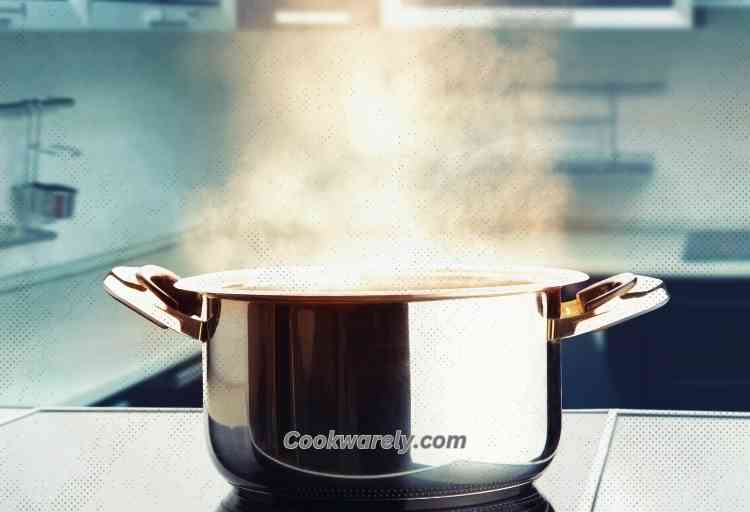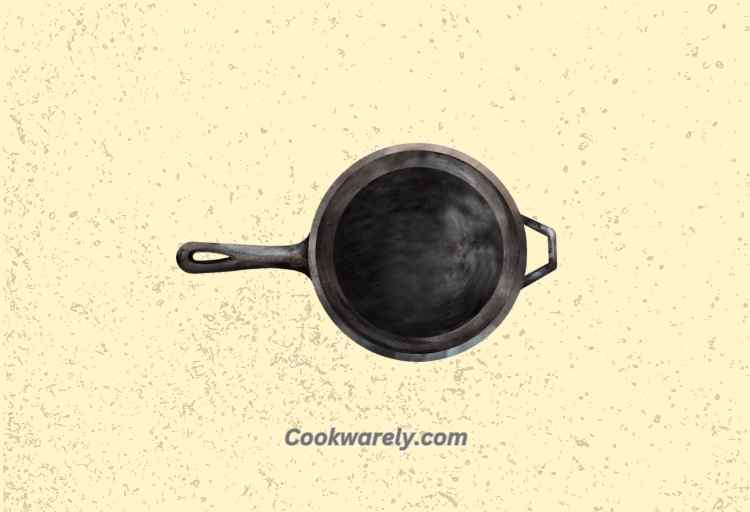Why Are My Stainless Steel Pans Burning? 8 Reasons
Have you ever faced the frustration of your food sticking and burning in your stainless steel pans?
Don’t worry; you’re not alone! It’s a common cooking conundrum, but there are practical solutions to prevent this culinary calamity.
Stainless steel pans may burn food due to uneven heat distribution, a common issue caused by the material’s poor heat conductivity. Factors such as the type of stove, preheating, and controlling heat play pivotal roles.
Using a clad stainless steel pan can mitigate this problem by combining stainless steel’s durability with aluminum’s efficient heat conduction.
8 Reasons That Cause Stainless Steel Pans to Burn Food
| Factors | Details |
|---|---|
| Heat Source (Stove Type) | Gas stoves may have open flames, leading to hot spots. Electric stoves have slower response times. Induction stoves offer precise temperature control. |
| Heat Conductivity of Stainless Steel | Stainless steel is not the best heat conductor. Clad stainless steel pans combine stainless steel with aluminum for even heat distribution. |
| Hot and Cold Spots | Uneven heat distribution in the pan can cause parts of the food to cook too quickly or stick. Hot spots can lead to burning. |
| Preheating | Preheating the pan allows it to evenly distribute heat and reduces the risk of sticking or burning. |
| Oil Usage | Adding a thin layer of oil can prevent sticking. Use high smoke point oils like vegetables or canola. |
| Ingredient Temperature | Cold ingredients can cause food to stick. Let them come to room temperature before cooking. |
| Heat Control | Stainless steel pans respond quickly to temperature changes. Adjust the heat to prevent burning. |
| Stirring or Flipping | Frequent stirring or flipping helps prevent food from sticking and burning. |

Key Takeaways
- Stainless steel’s limited heat conductivity can create uneven heating and hotspots, causing food to burn.
- The type of stove (gas, electric, induction) impacts heat distribution and cooking in stainless steel pans.
- Skipping preheating can lead to uneven heating and increase the risk of food sticking and burning.
Why Are My Stainless Steel Pans Burning?
Stainless steel pans may burn food for several reasons:
Heat Conductivity
Stainless steel, while durable, is not an efficient heat conductor compared to materials like aluminum or copper. This deficiency leads to uneven heat distribution within the pan, creating hotspots that can easily burn food.
Stove Type
The type of stove you use significantly impacts cooking with stainless steel pans:
- Gas Stoves: Gas stoves can have open flames that create hotspots in the pan. This necessitates careful monitoring to avoid burning.
- Electric Stoves: Electric stoves have slower response times. Adjusting heat levels may require some practice to prevent burning.
- Induction Stoves: Induction stoves offer precise temperature control but may require adapting your cooking techniques to fully harness their benefits.
Preheating
Skipping the preheating step can result in uneven heating. Preheating your stainless steel pan on medium heat for a few minutes allows it to distribute heat more evenly, reducing the risk of burning food.
Oil Usage
Using too little or no oil can lead to food sticking and ultimately burning. To prevent this, add a thin layer of oil with a high smoke point (e.g., vegetable or canola oil) to the pan before cooking.
Ingredient Temperature
The temperature of your ingredients matters:
- Cold ingredients can cause food to stick to the pan.
- Allow ingredients to reach room temperature before cooking to minimize the risk of sticking and burning.
Heat Control
Stainless steel pans are responsive to changes in heat. Adjusting the heat level as needed during cooking is crucial to prevent burning and achieve optimal results.
Stirring or Flipping
Frequent stirring or flipping of food can prevent it from sticking to the pan and burning. This technique not only helps with cooking but also enhances your cooking skills.
Factors Affecting Cooking Performance
Your stovetop plays a significant role in how your stainless steel pans perform. Is it a gas, electric, or induction stove? Different stoves have distinct characteristics that can affect your cooking experience. Here’s a quick rundown:
- Gas Stove: Gas stoves provide precise control over the heat. You can quickly adjust the flame to increase or decrease the temperature. However, the open flames can create hot spots, making it essential to be vigilant when cooking with stainless steel pans.
- Electric Stove: Electric stoves have heating elements that take some time to heat up and cool down. This slower response time can be both an advantage and a challenge when using stainless steel cookware.
- Induction Stove: Induction stoves use electromagnetic fields to heat the pan directly. They are incredibly efficient and offer precise temperature control, making them an excellent choice for stainless steel pans.
Clad Stainless Steel Pans
Now, let’s talk about what makes stainless steel pans special. Stainless steel on its own isn’t the best conductor of heat. That’s where the magic of clad stainless steel pans comes in.
These pans consist of multiple layers of metal, usually stainless steel and aluminum. This combination provides the benefits of both materials.
Stainless steel gives the pan its durability and non-reactive properties, while aluminum enhances heat conductivity.
This means your pan heats up evenly and responds quickly to temperature changes, reducing the risk of burning your food.
Hot and Cold Spots in Stainless Steel Pans
One of the key culprits behind burnt food in stainless steel pans is the presence of hot and cold spots.
These uneven heat distribution areas can cause parts of your food to cook too quickly while leaving other parts undercooked or sticking to the pan.
To avoid this, you need to get to know your pan better.
Tips to Prevent Burning in Stainless Steel Pans
Here are some practical tips to help you prevent burning food in your stainless steel pans:
- Preheat Your Pan: Before adding any ingredients, preheat your pan over medium heat for a few minutes. A warm pan is less likely to cause food to stick.
- Use the Right Amount of Oil: Adding a thin layer of oil to the pan can prevent sticking. Be sure to use an oil with a high smoke point, like vegetable or canola oil.
- Let Your Ingredients Come to Room Temperature: Cold ingredients can cause food to stick. Allow your meats or vegetables to sit at room temperature for a while before cooking.
- Adjust the Heat: Stainless steel pans respond quickly to changes in temperature. If you notice your food browning too fast, lower the heat to maintain control.
- Keep Food Moving: Frequent stirring or flipping of your food can help prevent it from sticking and burning. Plus, it’s a fun way to show off your culinary skills!
FAQs: Addressing Common Concerns
Let’s address some common questions about cooking with stainless steel pans:
Can I Use Stainless Steel Pans on High Heat?
Yes, stainless steel pans can handle high heat, but it’s essential to monitor the temperature to prevent burning.
How Do I Clean Burnt Food from Stainless Steel Pans?
Soak the pan in warm, soapy water to loosen stuck-on food, then scrub gently with a non-abrasive sponge or brush.
Are Stainless Steel Pans Dishwasher Safe?
Most stainless steel pans are dishwasher safe, but hand washing is recommended to maintain their shine and longevity.
Conclusion
Stainless steel pans are fantastic kitchen tools, but they can be a bit finicky when it comes to preventing burnt food. By understanding your pan, and your stove, and following our tips, you can become a culinary pro in no time.
Don’t be discouraged by a few burnt meals; practice makes perfect! So, go ahead, embrace your stainless steel pans, and cook with confidence.
Enjoy your delicious, non-burnt meals!





